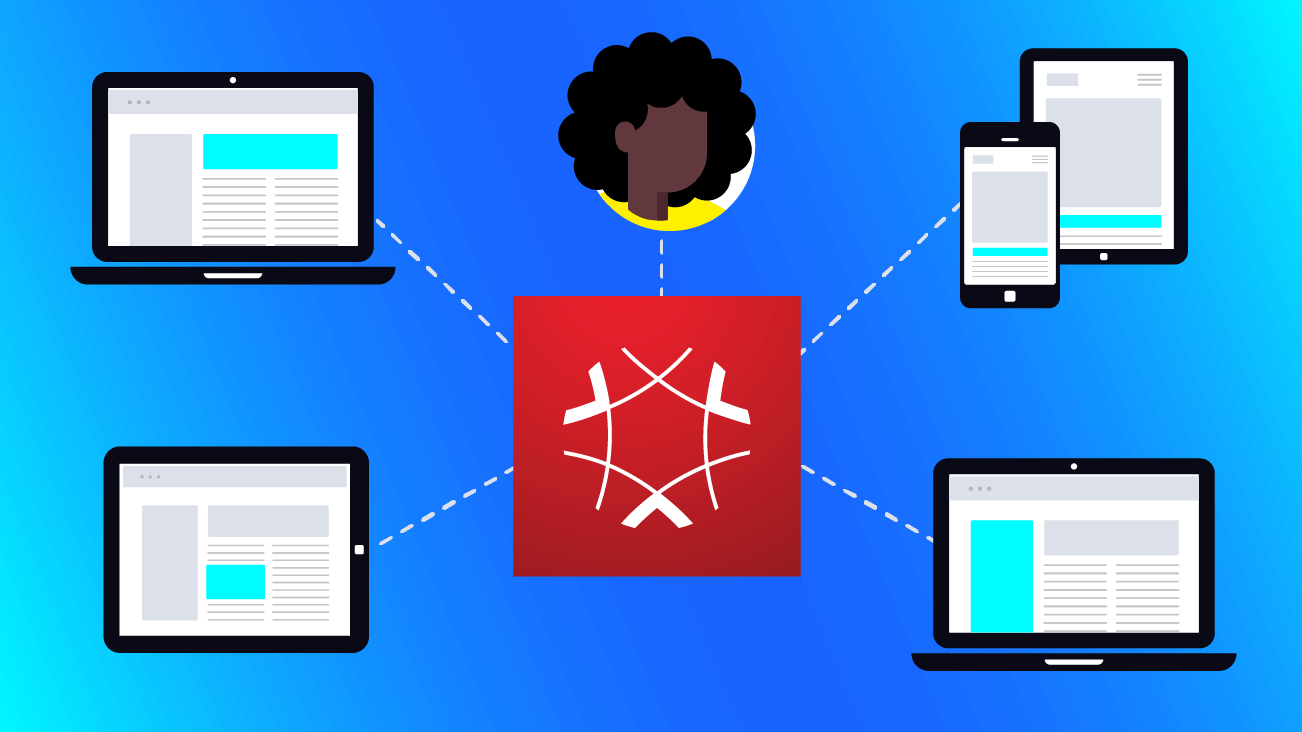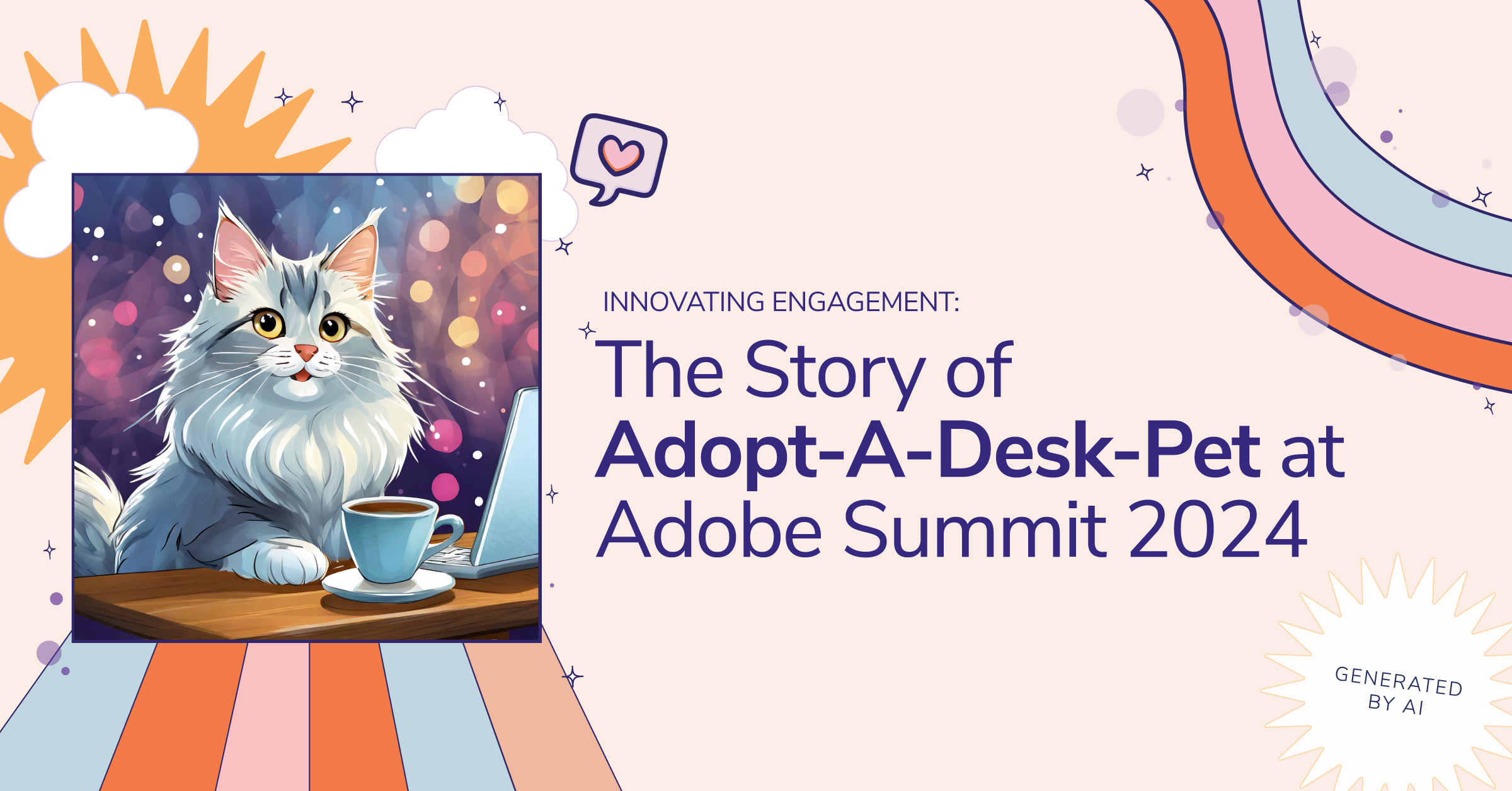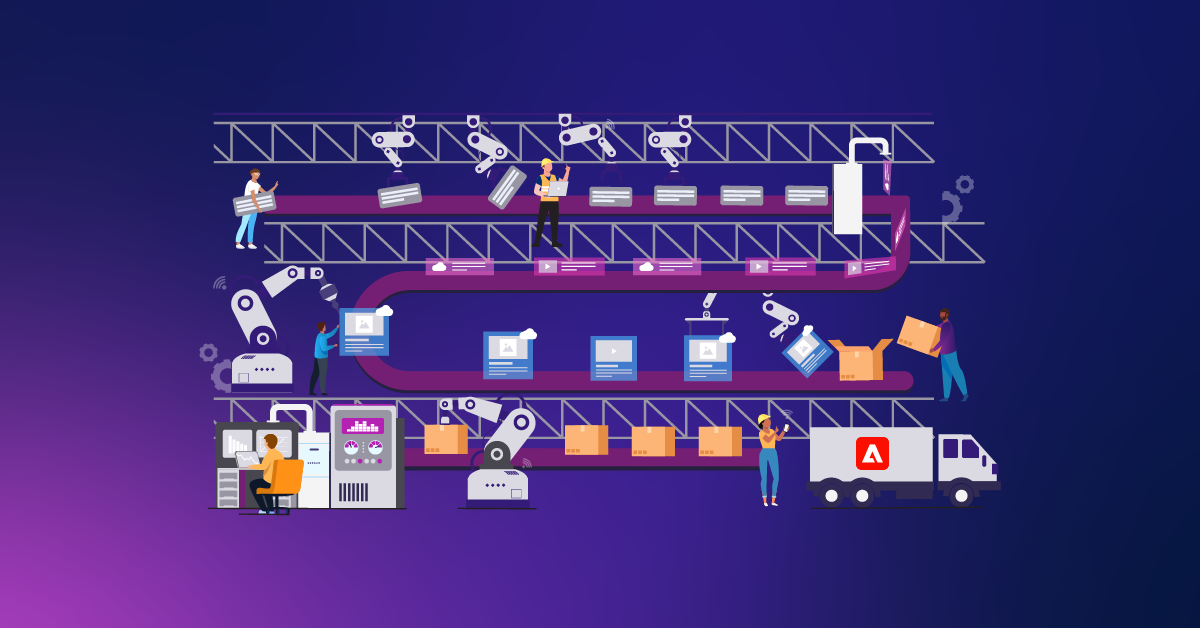Getting Started with the Adobe Experience Cloud

Transformative digital experiences are reshaping the marketing technology landscape. Like never before, contender firms are using digital to disrupt traditional industries and established firms are undergoing digital transformations that are reshaping their entire company. The reason for this is that customers have made it clear that they expect engaging customer experiences with their brand. In a recent study by Forrester, 61 percent of customers said that they were unlikely to return to a website that does not offer a satisfactory customer experience.
Since organizations are now seeing that creating customer experiences are central to their customer acquisition, engagement, and retention strategy, a variety of software vendors and products have sprung up to drive experience management. Among the companies focusing on customer experience, you will find some of the largest names in the industry including Salesforce, Oracle, Microsoft, IBM, SAP, and Adobe. Of these, Adobe has doubled down on experience management as the cornerstone of its marketing, product, and technology strategy.
Adobe’s offerings are bundled in the Adobe Experience Cloud (AEC). The AEC represents a suite of both software solutions and platform capabilities that leading companies can harness to drive customer engagement. In fact, more than two-thirds of Fortune 500 companies use Experience Cloud today, including 10 out of the 10 largest corporations. The AEC has helped fuel the growth of Adobe from a desktop software vendor to a company with a market cap of $120B and 21,000 employees around the world. In the 2018 Forrester Wave on Enterprise Marketing Suites, the AEC was named as the clear leader in both the strategy of the offering and the capabilities that it provides.
But What Exactly is the Adobe Experience Cloud?
Most users of the AEC are familiar with it as a suite of software products across marketing, analytics, advertising, and commerce. Due to the number of products within the AEC, it may be overwhelming to know what they all are or how they fit together. Keep in mind that the word "cloud" can be a misnomer, however, as some of these software products can run in your own data center.
Whether you're using just one of these products or have invested in integrating many of them into your organization's stack - it can be helpful to review the products to see what's been added recently or what other capabilities are available.
Marketing Cloud
Adobe Experience Manager
At the core of the marketing cloud is Adobe Experience Manager (AEM). AEM is an experience management platform (you may recall that these used to be called content management systems or CMS) that can allow marketers to create customized digital experiences with little to no IT involvement. AEM started in 2010 when Adobe acquired Day Software with its product CQ. It powers many of leading websites including Southwest Airlines, T-Mobile, and more.
AEM comes in a variety of available distributions:
- AEM Sites: The core functionality for building digital web experiences
- AEM Assets: Capabilities for managing the digital media (images, video, etc.) of an organization
- AEM Screens: Advanced functionality for creating, managing, and deploying digital displays
- AEM Forms: Enterprise-scale data collection and analysis capabilities
AEM can be run on a company's own infrastructure, but more and more clients are opting to run the cloud. AEM was named as the leader in the 2018 Forrester Wave: Web Content Management Systems.
Adobe Campaign
Adobe Campaign actually refers to two separate products. Both of these products focus on enabling omnichannel customer journeys by orchestrating campaign and transactional messaging across a variety of customer touch points.
Adobe Campaign Classic is a hybrid on-premise/cloud solution that is based on a product from a company called Neolane that was purchased by Adobe in 2013. Adobe Campaign Standard is a cloud-only solution that has many of the same features and functionality as Adobe Campaign Classic but is deployed 100 percent on the cloud.
These are both powerful tools that solve different use cases. For instance, Adobe Campaign Classic is applicable for handling HIPAA data while Adobe Campaign Classic is currently not appropriate for HIPAA data. Adobe Campaign was named as a leader in the Q1 2018 Forrester Wave on Cross Channel Campaign Management as well as a strong performer in the Q2 2018 Forrester Wave on Email Marketing Service Providers.
Adobe Target
Adobe Target is a robust testing, optimization, and personalization product from Adobe. Adobe Target came to Adobe via the acquisition of Omniture in 2009. Today, Adobe Target comes in two primary versions. Adobe Target Standard and Adobe Target Premium.
Adobe Target Standard provides extremely deep and robust capabilities for creating and running testing and optimization initiatives across all of an organization's digital touch points. Adobe Target Premium includes all of the capabilities of Adobe Target Standard and adds advanced functionality around product recommendations and automated personalization that leverages Adobe Artificial Intelligence capabilities branded as Sensei.
Adobe Target (and other Adobe products) was named the only leader by Forrester in the Q2 2017 Wave on Digital Intelligence Platforms. Adobe Target was also named as the only leader in the Q2 2018 Wave on Experience Optimizations Platforms.
Marketo
Marketo is the newest addition to the AEC. In the fall of 2018 Adobe acquired Marketo for $4.75B. Marketo is a powerful marketing automation tool that has shined in the Business to Business space with an emphasis on account-based marketing. Given it is the newest part of the AEC, there are still not a ton of integrations, but Bounteous has built the first AEM to Marketo integration, which you can download here. Earlier this year, we also released a Marketo-Adobe Launch extension.
Continuing the trend of top of the industry software products, Marketo was named a leader by Forrester in their Q4 2018 Wave of B2B Marketing Platforms.
Analytics Cloud
Adobe Analytics
Adobe Analytics is a leading enterprise analytics platform and was actually the first component of the Adobe Experience Cloud that came through when Adobe acquired Omniture in 2009. Adobe Analytics empowers both introductory and advanced users to identify and examine trends in their digital properties. One of the strongest features of Adobe Analytics is the robust analysis tools that are available to data scientists to derive deep insights on their data. Adobe Analytics was also named a leader by Forrester in their 2018 Customer Analytics Solutions.
Adobe Audience Manager
Adobe Audience Manager joined the AEC in 2011 when Adobe acquired DemDex. Adobe Audience Manager is actually one of the most powerful, but least understood, components of the AEC. Adobe Audience Manager is a DMP or Data Management Platform. Data Management Platforms have traditionally been used by marketers to consolidate first and second party data and to purchase third-party data as part of their media buying strategy. As organizations are seeking to develop a single view of the customer, DMPs are moving from their traditional media buying supporting roles to the cornerstone of an integrated adtech and martech stack to drive 360 views of their customers. Not surprisingly, Adobe Audience Manager was named as a leader in the Q2 2017 Forrester Wave on Digital Management Platforms with an almost perfect score around their offering.
Advertising Cloud
Advertising Cloud (Formerly Media Optimizer)
From a branding and packaging perspective, the Advertising Cloud has experienced some of the most change in the past few years. A big piece of the Ad Cloud came in 2016 when Adobe acquired video advertising technology TubeMogul. Until very recently this included branding around Media Optimizer DSP, Media Optimizer DCO, and Media Optimizer Search but these have all been consolidated under the single umbrella product, Ad Cloud.
Adobe Commerce Cloud
Adobe Commerce
The Adobe Commerce Cloud, previously known as Magento Commerce Cloud is the newest “cloud” as part of the overall AEC from when Adobe acquired Magento. The core product offering in this suite is Adobe Commerce which is a robust B2B and B2C eCommerce platform that can enable small, medium, and very large organizations to create and manage digital marketplaces for goods and services.
Adobe Commerce was named a strong performer in both the Forrester Wave B2C Commerce Suites, Q3 2018, and The Forrester Wave™: B2B Commerce Suites, Q3 2018, indicating its ability to handle a wide variety of use cases.
Adobe Commerce Order Management
Adobe CommerceOrder Management (new in Adobe Commerce 2) is an add-on to the core Adobe Commerce functionality. Adobe Commerce Order Management provides retailers with the ability to have a robust order fulfillment platform that is integrated with their customers' shopping experience but supports multiple disparate channels.
Adobe Commerce Business Intelligence
Adobe Commerce Business Intelligence is an add-on to the Adobe Commerce suite that enables you to gain more insight and information across your entire retail experience. It works with the rest of the suite to analyze product, customer, and sales data stored in Adobe Commerce.
Is That All?
The products I covered above represent just one view of the Adobe Experience Cloud. Adobe has recently been including the Creative Cloud for Enterprise (Photoshop, After Effects, etc.) as well as the Document Cloud for Enterprise as part of the overreaching AEC.
Another way to look at the AEC is via the platform on which it runs. The AEC platform includes a variety of core services that enable a consistent view of People, Places, Assets, Mobile and Activation that are shared by all of the products; Adobe Launch which enables dynamic deployment of functionality; Adobe Sensei which powers Machine Learning and Artificial Intelligence Capabilities; Experience Data Models which enable an open view of customers; and other platforms and services like the Adobe I/O API and serverless runtime.
The Adobe Experience Cloud is more than just a collection of standalone products. These products are built upon a robust layer of services, APIs, and integrations that when taken as a whole provide an entire toolbox for achieving business results.


